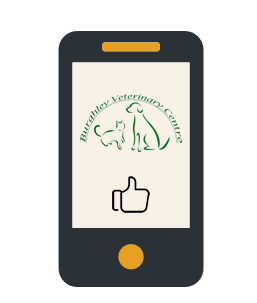Cats & Kittens
Looking After Your Kitten/Cat
Your kitten is here!
 You have just adopted a kitten, and are looking forward to many years of shared tenderness, providing it with everything it needs.
You have just adopted a kitten, and are looking forward to many years of shared tenderness, providing it with everything it needs.
Perhaps you are already well aware, or perhaps you only somehow feel, that this little ball of fluff is full of mystery – and you are quite right.
Most of all, a cat is not a little dog! Our two most familiar pets may have the fact of being carnivorous in common, but their behaviours are very different from one another´s. And if you want to make a cat happy, you need to respect its peculiarities.
A well-deserved reputation!
Rightly felt to be less demanding than dogs as far as training is concerned, cats enjoy the reputation of being clean and independent at the time of adoption. They seem to be the perfect pet: little bother, entirely able to cope with the many times when they have to stay alone, and giving love and affection while respecting the independence of their masters.
But all that should not prevent the owners from getting involved in their new friend´s up-bringing.
One of the first things to check is how far your kitten has got in terms of its socialisation. A very simple and useful test here is to (gently) take the kitten by the scruff of its neck and lift it up.
A properly socialised kitten will respond to this kind of handling by curling up with its tail raised under its belly and a glassy look in its eyes. This is what is known as a ´positive carrying reflex´, and such a reaction indicates that the kitten has stayed long enough in contact with its mother to be able to be properly socialised.
If, on the contrary, the kitten begins to howl when you lift it up in this way, with its claws out and the whole body arched in hyper-extension, then its level of socialisation is very low and it is going to be difficult to make a pleasant family pet of your kitten.
If, after checking this reflex out several times, you still decide to keep the kitten, do not hesitate to speak about it with one of our vets, who will be able to advise you as to how to increase your new friend´s contact tolerance.
Why Vaccinate?
Vaccination is vital in protecting your pet from various diseases that cause pain, distress and can be fatal.
Annual vaccination appointments also provide an opportunity for regular health checks for your pet.
Vaccinations for cats and dogs usually consist of a primary course of 2 vaccinations to stimulate an immune response, followed by annual boosters as the initial immune response gradually fades over time.
Cats can be vaccinated from 9 weeks of age, with a second vaccination 3-4 weeks later.
Core cat vaccinations include feline herpesvirus and calicivirus (two agents responsible for cat flu) and feline panleukopaenia virus which causes feline infectious enteritis.
We also recommend vaccinating your cat against the feline leukaemia virus, a virus which suppresses the immune system and is potentially fatal. It is important to keep your pet’s vaccinations up to date, as a delay in their booster allows for a decrease in immunity, and may mean that your pet needs to restart their primary vaccination course.
Changing Your Cat's Food
Animals do not need variety in their diets.
Both dogs and cats are prone to becoming finicky eaters when fed a varied diet, causing problems for their owners later on. So don’t switch foods every other week.
If you do need to change from one product to another, do so gradually by mixing the two diets together for a few days.
This will help prevent diarrhoea from a too sudden change in food.
Don’t base your food choices on what you would like to eat, as many pet food manufacturers would like you to do. Pets are colour blind, so they don’t care whether their food is red or brown.
They also don’t care if it looks like beef stew or little pork chops! The fancier the food looks, the more you are paying for unnecessary artificial colouring, flavouring and preservatives.
A dry food is best for your pet’s teeth and gums, so the majority of your dog or cat’s nutritional needs should be met with a DRY type food.
Canned foods are much more expensive to feed, as you are paying for a lot of water and extra packaging.
Many people like to supplement their pet’s diet with some canned food, and this is fine as long as you pick a good one, and don’t overdo it. Canned foods are more likely to have excesses of protein, which can cause or contribute to kidney disease as your pet ages, as well as being worse for your pet’s teeth.
Flea and Worm Treatments
A regular flea prevention and worming routine is important in keeping your pet fit and healthy. Your pet can encounter worms and skin parasites anywhere out on a walk where other animals have been or even in your own garden.
What worms are out there?
There are many different types of worms that can infect your dog and cat in the UK or if your pet travels abroad with you.
The main species in the UK are roundworm, tapeworm, whipworm, hookworm, heartworm and lungworm. Some of these can be potentially harmful to humans as well, namely roundworm and tapeworm.
How does my pet get worms?
Most transmission of worms is where the eggs or larvae are shed in the faeces of infected animals and are ingested by your pet as they graze or snuffle in the grass.
Once inside the pet, these mature into adult worms, which shed more eggs, and so the cycle continues. Worm eggs can also be brought into the house on shoes and transmission of some worms is via an intermediate host such as snails or fleas so indoor pets can be affected too.
What skin parasites should I be concerned about?
Cats and dogs can be affected by a number of skin parasites including fleas, lice, mites that live on the skin or in ears and ticks. These can be contracted from other affected pets, from wildlife ie foxes, or from the environment (this includes your home if one of your pets has brought in fleas!).
Signs can include itching (but not in all cases), hair loss, head shaking, reddening of the skin or even sightings of the parasites on your pet.
Pre-Op Care
- Do not feed your pet food or milk after 8pm the evening prior to admission.
- Water can be freely available overnight until your pet is admitted.
- Cats should be kept indoors overnight and have a litter tray. This is to ensure that they do not help themselves to food outside.
- Please bring your pet to the surgery at the appointed time. Announce yourself to the receptionist and you will be asked to take a seat in the waiting room. The admissions nurse will then call you in.
- If you have accidentally broken any of the above rules please telephone the surgery or tell the admissions nurse. If you have anything you want to discuss before admission then either telephone the receptionist before you come down for an appointment to be made with one of the vets or speak to the admissions nurse.
- If your pet is likely to require any regular medication or special diet whilst in the surgery, please bring these with you.
- Remember to always have your cat in a secure cat
Post Surgery
Your pet has had an anaesthetic and may be sleepy for up to 48 hours. (Allow peace and quiet during this time).
A mild cough may be present. This is due to a tube having been placed in his trachea during the anaesthesia.
- Keep your pet warm, dry and comfortable; avoid placing bed in extremes of temperature or in a draught.
- Avoid activity such as climbing stairs and jumping onto furniture.
- Your pet’s judgement may not be as accurate after an anaesthetic and he may stretch the stitches.
- If accepted, give only light meals (e.g. prescription diets) for the first 24 to 48 hours unless otherwise specified.
- If your pet has undergone a surgical procedure, please check for abnormal events such as swelling of the wound, bleeding or other discharge, vomiting and interference of the stitches. Contact the surgery or come in for a check in such cases.
- Stitches are to be removed in 10 – 14 days.
- The stitches placed in a cat spay wound may be dissolving stitches. If they are still present in 3 to 4 weeks, then return for a check-up to have them removed.
- Check dressings/casts/splints at least twice daily for abnormal smells, discolourations, discharges, discomfort, etc.


